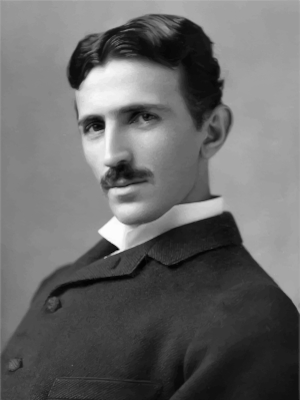Because of the relentless pursuit of knowledge by these scientists, the boundaries of human knowledge have been expanded, and we have altered the way we live, work, and perceive the world around us. This article contains five famous male scientists.
Albert Einstein
Born in 1879, Einstein was a gifted child. As a teenager, he wrote a paper on magnetic fields. In 1905, he began as a clerk in the Swiss Patent Office. There he published four groundbreaking papers, addressing topics such as Brownian motion, the photoelectric effect, special relativity, and the famous equation ‘E=mc2’. Einstein’s work in special relativity introduced the idea that space and time are interwoven, which laid the foundation for modern astronomy. He expanded his theory of relativity in 1916 with the development of general relativity, where he proposed that mass distorts the fabric of space and time. Einstein received the Nobel Prize in physics in 1921. However, he did not receive this award for his work on general relativity but for his discovery of the photoelectric effect.

Isaac Newton
Isaac Newton was an English mathematician, physicist, and astronomer. He invented calculus, a new form of mathematics. In 1687, the culmination of Newton’s work, “Philosophiæ Naturalis Principia Mathematica,” commonly known as the Principia, was published. Not only did this describe the motion of planets and projectiles, but it also revealed the unifying force of gravity, demonstrating that it governed both heavenly and earthly bodies. Newton’s laws became the key to unlocking the universe’s mysteries. However, his contributions extended beyond the laws of motion and gravitation, such as his groundbreaking work in optics, color theory, the development of reflecting telescopes, and fundamental advancements in mathematics and heat.
Charles Darwin
Darwin began his journey with an interest in collecting beetles and studying geology. In 1831, he received an invitation to join a journey around the world aboard the HMS Beagle. During his five-year expedition aboard the HMS Beagle, Darwin observed and documented geological formations, various habitats, and the diverse flora and fauna across the Southern Hemisphere. Darwin discovered that different species can have slight differences based on their surroundings. For example, the finches in the Galapagos Islands have different beak shapes depending on their food sources. This led Darwin to propose the idea of natural selection, which suggests that species can change over time due to their environment rather than through divine intervention. Over a period of twenty years, he gathered overwhelming evidence to support his ideas. Eventually, Darwin published his groundbreaking book, “On the Origin of Species,” in 1859. The book quickly sold out and went on to have six editions, with Darwin continuously refining his arguments.

Nikola Tesla
Tesla was a Serbian-American engineer who had a remarkable talent for science and invention. From a young age, he showed great aptitude in the fields of electricity, magnetism, and wireless power transmission. Tesla’s groundbreaking designs, particularly in alternating current (AC) technology, played a vital role in the advancement of the electric age, allowing for the transmission of electric power over long distances and illuminating homes across America. Tesla made a major impact on electrical engineering with his development of the Tesla coil, a high-voltage transformer. His innovative techniques allowed for wireless power transmission, which is still being explored today, especially in wireless charging for cell phones.

Galileo Galilei
Galilei’s observations revealed remarkable discoveries, including the existence of four large moons orbiting Jupiter and the understanding that the faint glow of the Milky Way came from countless distant stars. He also identified sunspots on the surface of the sun and observed the phases of Venus, providing conclusive evidence that Venus orbits the sun within Earth’s own orbit. His groundbreaking findings supported the sun-centered solar system model proposed by Polish astronomer Nicolaus Copernicus, who had revolutionized astronomy. In addition to his astronomical observations, Galileo made important contributions to the understanding of motion. He demonstrated that objects dropped simultaneously would hit the ground at the same time, regardless of their size, showing that gravity is not dependent on an object’s mass. His principle of inertia, in particular, would shape the thinking of upcoming scientists, such as Sir Isaac Newton, who expanded on Galileo’s findings to develop a comprehensive set of laws of motion that still steer spacecraft navigation throughout the solar system in present times.
Sources:
https://www.discovermagazine.com/the-sciences/the-10-greatest-scientists-of-all-time
